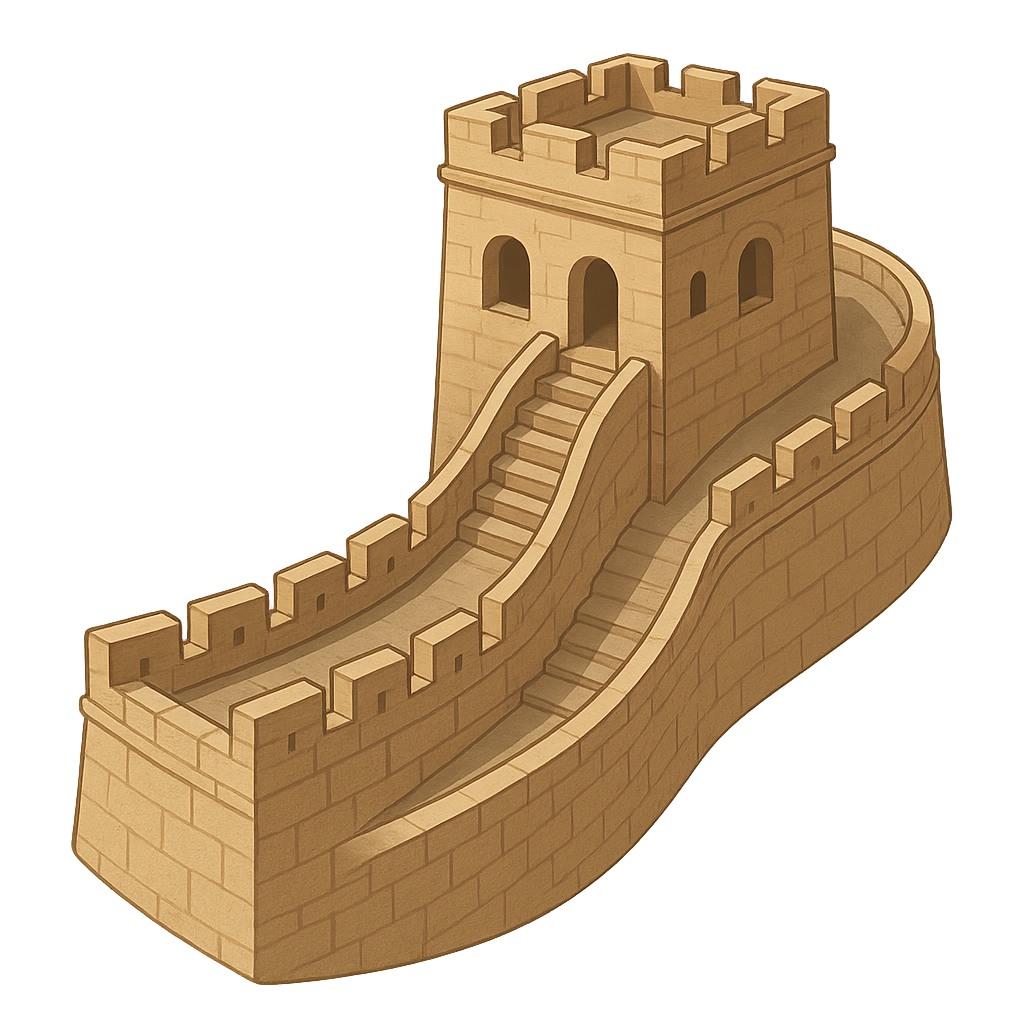The Stone Dragon of China
I am a creature of stone and earth, a silent dragon sleeping across a vast land. My spine winds over the sharp, jagged peaks of mountains, my tail dips into lush green valleys, and my long body marches across golden deserts under a brilliant sun. For thousands of years, I have felt the first rays of dawn warm my stone scales and watched the cool blanket of stars cover me at night. I have seen dynasties rise and fall like the changing seasons. Imagine standing on my wide, strong back, with the world stretching out before you—a patchwork of fields, forests, and rivers as far as your eyes can see. You can feel the whispers of history in the wind that rushes past my watchtowers. I am a sentinel, a protector, and a witness to centuries of human dreams and determination. I have many names, but the one you know best is the Great Wall of China.
My story begins not with a single brick, but with an idea. Long, long ago, the land I protect was not one nation, but many separate kingdoms, each constantly warring with its neighbors. To protect themselves, they built walls of packed earth. Then, a powerful man named Qin Shi Huang came to power. In 221 BCE, he did what no one had done before: he conquered all the kingdoms and united them into a single, mighty empire. But his new empire was vulnerable. From the vast grasslands of the north, skilled horsemen would often raid the farmlands. Emperor Qin had a grand vision. He decreed that the old, separate walls would be connected, and new sections would be built to form one continuous line of defense. It was a monumental task. Millions of people—soldiers, farmers, and even prisoners—were sent to the northern frontier. They worked under the scorching sun and in the bitter cold, using whatever materials they could find. In the plains, they pounded earth into strong, dense blocks. In the mountains, they quarried heavy stones and fit them together like a puzzle, creating the first version of me.
But I was not built in a single lifetime. My creation spanned centuries, and I grew and changed with each passing dynasty. After Emperor Qin, some parts of me were strengthened, while others were left to the wind and rain. My most magnificent and enduring form came much later, during the Ming Dynasty, which ruled from 1368 to 1644 CE. The Ming emperors faced new threats from the north and decided to make me stronger than ever before. They were master builders. Instead of just packed earth, they used heavy, kiln-fired bricks and massive blocks of stone, bound together with a special mortar made from sticky rice. They built me taller and wider, with crenellations for archers to hide behind. Along my length, they constructed thousands of watchtowers, each within sight of the next. These towers were my eyes and ears. From their tops, guards kept a constant lookout. If they spotted an enemy, they would send a signal. During the day, they would burn wolf dung to create thick columns of smoke; at night, they would light blazing fires. A message could travel hundreds of miles along my back in just a few hours, a remarkable communication network for its time.
Over the centuries, I became more than just a barrier against invaders. My wide, paved top served as a vital highway, a road in the sky. Soldiers could march quickly from one fortress to another, and messengers on horseback could gallop along my path, carrying urgent news. I was also a lifeline for trade. I protected parts of the legendary Silk Road, the network of routes that connected China to the Middle East and Europe. Thanks to my watchful presence, caravans of camels carrying precious silk, fragrant spices, and delicate tea could travel more safely. I became part of the landscape and the culture. Fortresses built along my length became small towns where families lived and worked. Generations of guards were born, grew up, and grew old in my shadow. Poets wrote about my lonely majesty, and artists painted my winding form disappearing into the misty mountains. My story was no longer just about war; it was about connection, commerce, and the enduring spirit of a nation.
My fighting days are now part of history. The watchtowers are silent, and no warning fires light up the night sky. I am no longer a barrier designed to keep people out; instead, I have become a bridge that brings people from all over the world together. In 1987, I was named a UNESCO World Heritage site, recognized as a treasure belonging to all of humanity. Every year, millions of visitors climb my steep steps. They come from every corner of the globe to walk on my back, to touch my ancient stones, and to gaze out at the same breathtaking views my guards saw centuries ago. I am a powerful reminder of what humans can achieve through shared effort and incredible perseverance. I stand today not as a line of division, but as a symbol of strength, endurance, and the long, beautiful, and winding story of human history that connects us all.
Reading Comprehension Questions
Click to see answer
